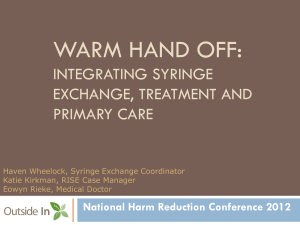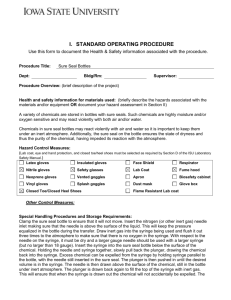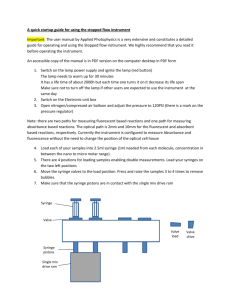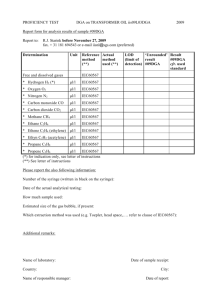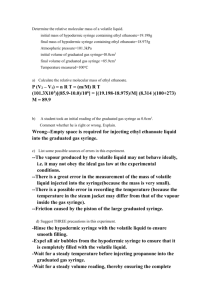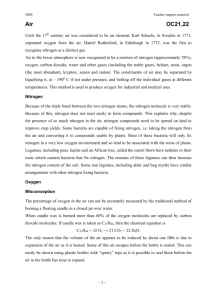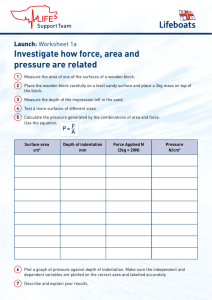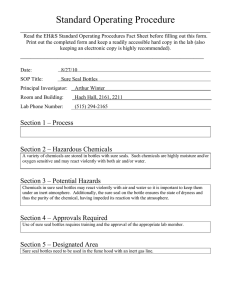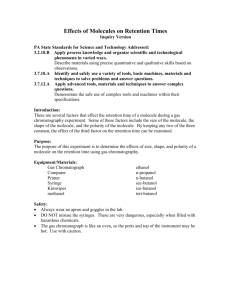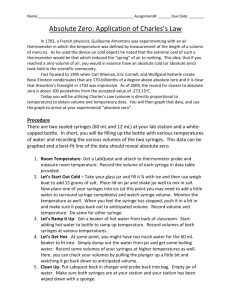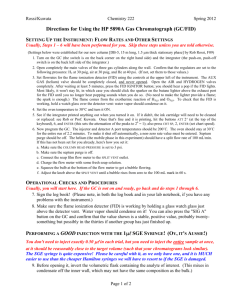Guidelines-pyrophoric liquid
advertisement
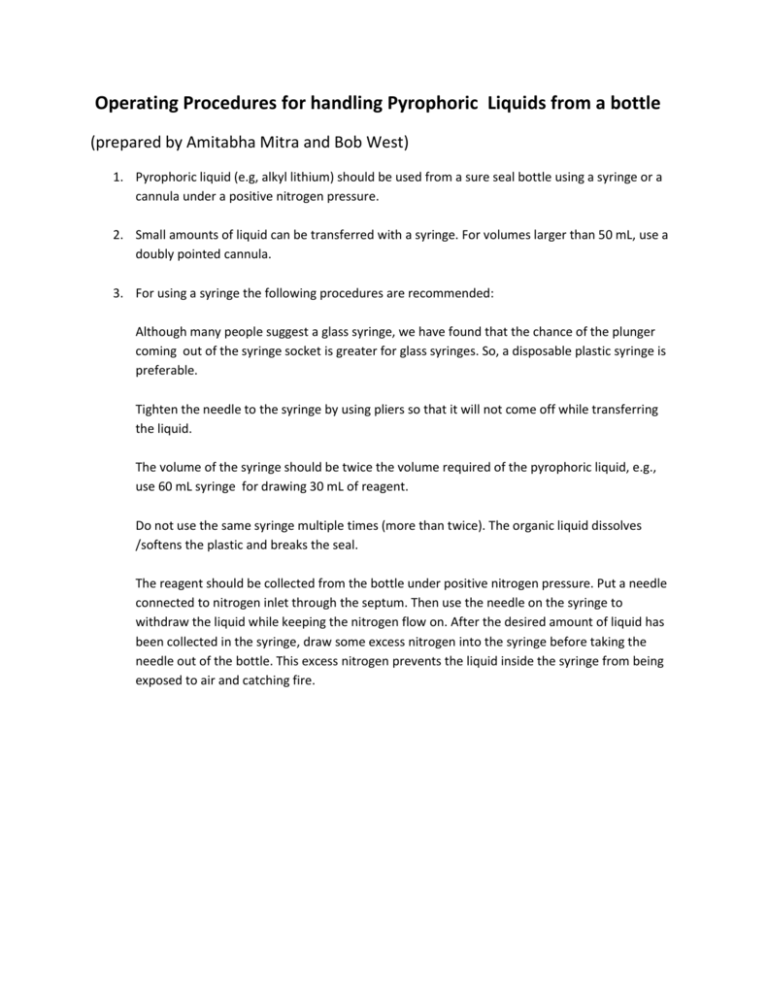
Operating Procedures for handling Pyrophoric Liquids from a bottle (prepared by Amitabha Mitra and Bob West) 1. Pyrophoric liquid (e.g, alkyl lithium) should be used from a sure seal bottle using a syringe or a cannula under a positive nitrogen pressure. 2. Small amounts of liquid can be transferred with a syringe. For volumes larger than 50 mL, use a doubly pointed cannula. 3. For using a syringe the following procedures are recommended: Although many people suggest a glass syringe, we have found that the chance of the plunger coming out of the syringe socket is greater for glass syringes. So, a disposable plastic syringe is preferable. Tighten the needle to the syringe by using pliers so that it will not come off while transferring the liquid. The volume of the syringe should be twice the volume required of the pyrophoric liquid, e.g., use 60 mL syringe for drawing 30 mL of reagent. Do not use the same syringe multiple times (more than twice). The organic liquid dissolves /softens the plastic and breaks the seal. The reagent should be collected from the bottle under positive nitrogen pressure. Put a needle connected to nitrogen inlet through the septum. Then use the needle on the syringe to withdraw the liquid while keeping the nitrogen flow on. After the desired amount of liquid has been collected in the syringe, draw some excess nitrogen into the syringe before taking the needle out of the bottle. This excess nitrogen prevents the liquid inside the syringe from being exposed to air and catching fire. Keep holding both the syringe and the plunger firmly until you push the liquid into the receiver flask through a rubber septum. 4. Determine the safe reaction condition before hand, e.g., decide if you need to cool the flask to prevent runaway reaction during addition of alkyl lithium to the reactant in the flask. 5. Safety goggle with side shields and fire-resistant lab coats should be worn all the time!

